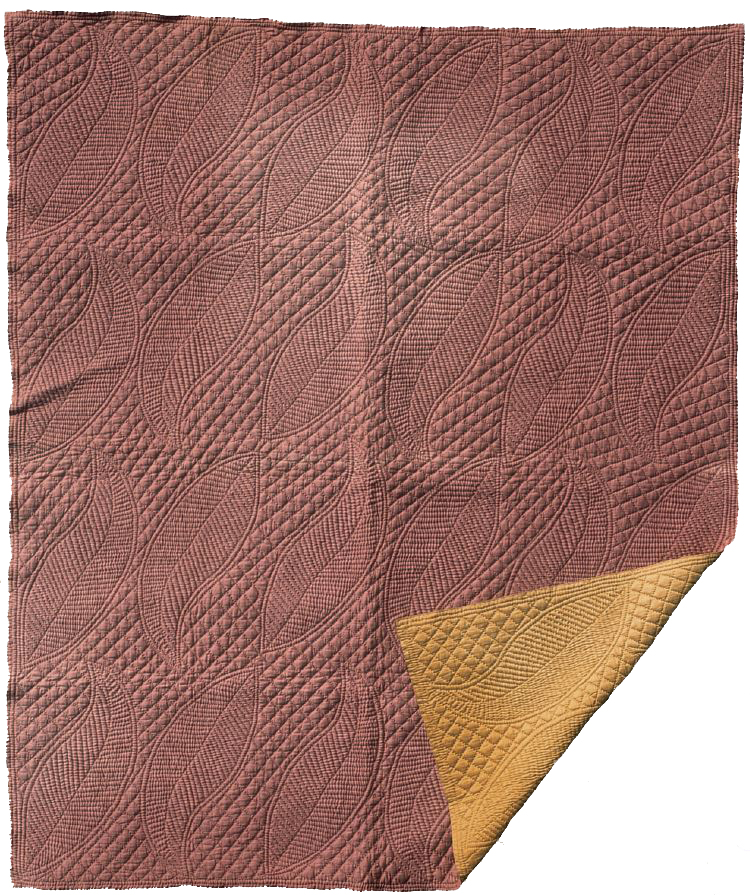

As the name implies, wholecloth quilts were made from a single piece of cloth for small quilts or a single fabric joined to create a whole piece for larger quilts. This could form the plain side of a patchwork or frame quilt, or both back and front (usually in two contrasting but complementary colours) of a wholecloth quilt. A variety of fabrics was used, but those with a subtle sheen were particularly popular. The play of light and shadow on fabrics such as cotton sateen enhanced the sculptural effects of the quilting and showed designs to good advantage. Wholecloth designs followed the same traditional British format as the frame quilt, with a central medallion surrounded by a series of clearly defined borders. In the 1880s quilt design in North East England radically altered, but in Wales the style remained unchanged. In the 1930s a few Welsh quilters adopted the new format, but this was generally frowned upon as diluting the Welsh tradition and the old style prevailed. There are always exceptions to the rule (especially in Welsh quilts) and some twentieth century quilts have a less rigid design format. As demonstrated by Miss Price’s quilt here, these tend to be quite individualistic and help to give Welsh quilts a reputation for being ‘quirky.’